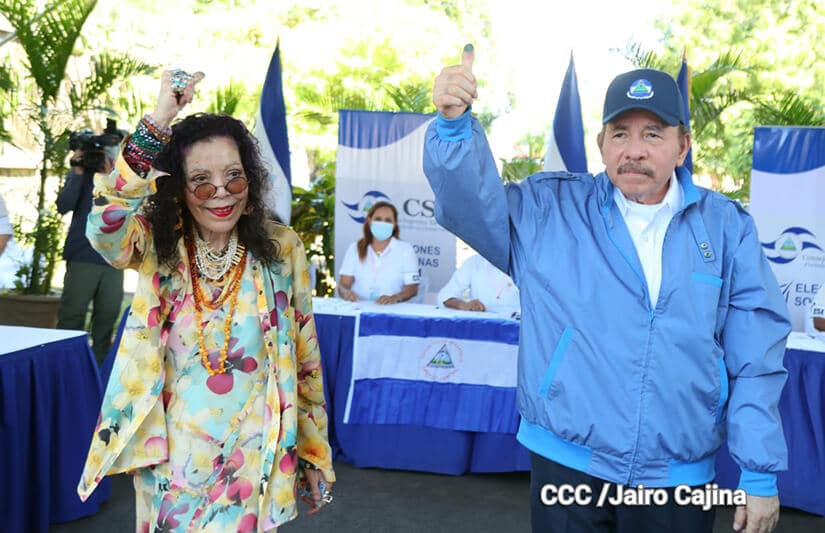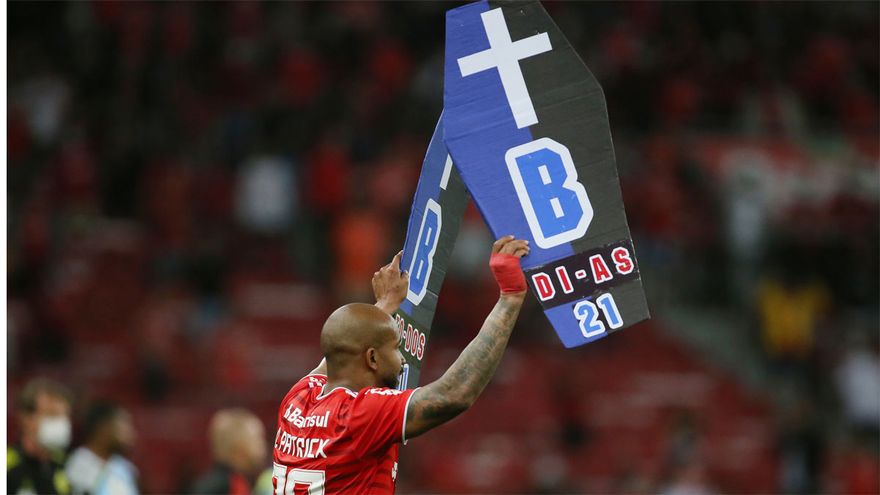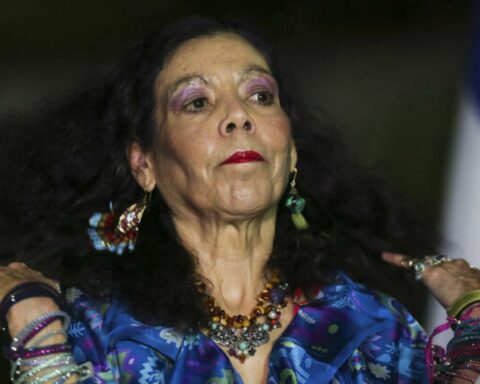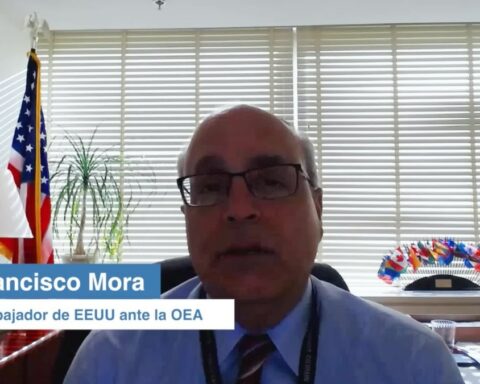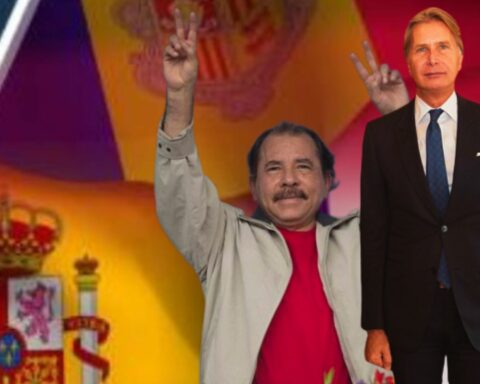The voting process has concluded and the Supreme Electoral Council, controlled by Ortega operators, assigned 75.92% of the votes to the Sandinista Front, what will mean for this political party a just over $ 17.4 million in electoral reimbursement for alleged campaign expenses, according to calculations of CONFIDENTIAL.
For the voting process on November 7, 23.4 million dollars were allocated from the General Budget of the Republic (PGR) for the electoral reimbursement fund of the contending parties.
This fund is financed with 1% of the ordinary income of the PGR of 2021 and is intended to supposedly reimburse the electoral campaign expenses incurred by the contending political parties.
Nevertheless, the electoral refund mechanism lacks transparency and it is handled with great opacity, opening the doors for it to be used as a way to get the collaboration of minority or unknown political forces, in order to give a false normality to the voting process.
First, the electoral reforms that the Sandinista Front and its political partners in the National Assembly approved in April, eliminated the lock that established that at least 4% of the votes had to be obtained to be beneficiaries of reimbursement by the Supreme Electoral Council (CSE).
This time, regardless of the percentage of votes they register, all the contending parties will be able to receive from the electoral expenses reimbursement fund.
Some opposition political parties and electoral specialists denounced, after the entry into force of the electoral reform on May 4, that the established money delivery system promoted what is popularly known as “zancudismo”, that is, participating not with the objective of reaching power or demonstrating a political muscle, but to simply be benefited with the millionaire electoral refund.
“A party that gets 1% will receive a $ 230,000 prize for having gone for a wading”, Denounced in May the president of Ciudadanos por la Libertad, Kitty Monterrey, when this organization was still part of the electoral process, before Ortega, with the complicity of the Constitutionalist Liberal Party (PLC), stripped them of their legal status on August 6 last.
Assignments to stilt walkers
The Sandinista Front had political collaboration For this voting process, in addition to the PLC, Alianza por la República (APRE), Camino Cristiano Nicaragüense (CCN), Alianza Liberal Nicaragüense (ALN), Partido Liberal Independiente (PLI) and Yatama, which competed as a regional party on the Coast Nicaraguan Caribbean.
Taking into account the assignments made by the CSE, the PLC would become the “second political force in the country” with 14.15% of votes, followed by CCN (3.30%), ALN (3.15%), APRE (1.78%) and PLI (1.70%).
Without the electoral reform of last April, the political parties CCN, ALN, APRE and PLI would not have had the right to receive electoral reimbursement and would also have lost their right to be a current political force, due to these poor results assigned to them by the CSE. .
Taking these assignments into account, the PLC would have a “right” to receive a little more than 3.3 million dollars from the electoral reimbursement. The CCN would receive 759 thousand dollars, the ALN, 724 thousand dollars, APRE would receive 409 thousand dollars and the PLI, 401 thousand dollars.
The electoral reforms did not establish a transparent mechanism for the delivery of this money to the political parties, limiting themselves to saying that this process would be supervised by the Comptroller General of the Republic -another entity that responds to the interests of the dictatorship- and the Ministry of Finance and Public Credit.
Former electoral campaign bosses consulted by CONFIDENTIAL They explained that before the electoral reforms, the reimbursement mechanism determined that the delivery of the money was “against invoice”, that is, that the amount to be delivered was determined based on the invoices for campaign expenses delivered by the political parties, not based on the percentage of valid votes announced by the Supreme Electoral Council.
Eliseo Núñez Morales, who was head of the electoral campaign in 2011 of the then candidate, the radio businessman Fabio Gadea Mantilla, said that precisely the purpose of the participation of the collaborationist parties in such irregular electoral processes is the search for electoral reimbursement.
“Is that that is the end of these little games, get the refund. It is a lot of money and having eliminated the 4% minimum vote lock to obtain the refund, it implies that now they will receive the money. I have my suspicions that with the bad habits that Guillermo Osorno (CCN candidate) did, he can take care of that little money, but definitely the ultimate goal of them is to receive that money, which is good money, “said the political analyst.
Money a posteriori
The reimbursement mechanism established that before the start of the electoral campaign, the CSE issued an endorsement for the contending political parties to obtain a bank credit for electoral campaign expenses. This credit will be corrected later with the reimbursement made by the Electoral Power, after the final results of the elections are registered.
Article 99 of the Electoral Law, after the April reform approved by Ortega and its political allies, establishes that now “said reimbursement will be granted to political organizations according to the percentage of valid votes obtained in the election of president or president and vice president or vice president. They must render accounts in a documented and detailed manner before the Office of the Comptroller General of the Republic, the Ministry of Finance and Public Credit and the Supreme Electoral Council ”.
Neither was it publicly known of any circular or statement from the Electoral Power clarifying that this reimbursement was going to be delivered based on the electoral campaign expenses that the political parties manage to justify, regardless of the valid votes assigned by the CSE.
The electoral campaign “that did not exist”
Another problem with the lack of transparency of the electoral reimbursement mechanism is that due to the context of the pandemic and the fact that there was no genuine political competition, the electoral campaign of this voting process it was characterized by its null presence.
A special report from CONFIDENTIAL published two days before the voting, consulted experts in political communication, digital communication analysts, and politicians with experience in electoral campaigns, who assessed that there was “no” electoral campaign in Nicaragua and the intention of the participating political parties was not perceived, all necessary collaborators of the Sandinista Front. , to promote your candidates.
The specialists assured that, in an electoral process with guarantees and competition, the political parties should have made “noise” on social networks, but the absence of that campaign, which officially closed on November 3, is a sign of the atypical Nicaraguan process, in charge of a collapsed electoral system under FSLN control.
Even the Sandinista Front maintained an opaque electoral campaign and without “much noise”. Daniel Ortega himself appeared in public only three times in this unusual electoral campaign. He made no campaign promises, nor did he announce new development policies, investments, or projects. In those three interventions he did the usual. Attack those who oppose it, impose the radio and television network to see and listen to it and incidentally, violate the Electoral Law by political proselytizing with State resources.

